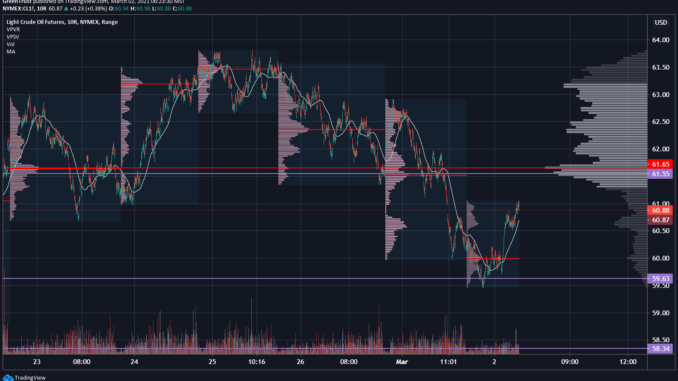
Singapore — 0305 GMT: Crude oil futures dived during mid-morning trade in Asia March 2, as a stronger US dollar eroded buying sentiment, and as uncertainty over the upcoming OPEC+ meeting continued to weigh on the market.
At 11:05 am Singapore time (0305 GMT), the ICE Brent May contract was down 96 cents (1.5%) from the March 1 settle to $62.73/b, while the April NYMEX light sweet crude contract fell $1.07/b (1.76%) to $59.57/b.
The fall in crude prices was precipitated by a stronger US dollar, which makes purchasing oil more expensive for buyers using other currencies. At 10:54 am, the March US Dollar Index futures on ICE was trading at 91.235, up 0.388% from the March 1 settle of 91.036.
Contributing to the downturn was jitters ahead of the March 4 OPEC+ meeting, which is expected to offer guidance into the coalition’s production plan going forward.
“Crude oil fell as traders look ahead nervously to the OPEC meeting later this week,” ANZ analysts said in a March. 2 note.
The coalition has currently taken out 7.2 million b/d of crude production — roughly 7% of pre-pandemic supply — and can increase supply by up to 500,000 b/d each month, as per the agreement struck on Dec. 3, 2020.
The March 4 meeting, however, could potentially see oil production rising by up to 1.5 million b/d, as Saudi Arabia is also expected to announce whether it will extend its voluntary additional 1 million b/d cut, scheduled to end after March.
Analysts believe that given rising global oil demand, the market can likely absorb a 1.5 million b/d increase in oil production. However, these analysts have also cautioned that such a large increase in supply could spook the market, and lead to a downward price correction.
The meeting may see some contention among coalition members, some of whom such as Saudi Arabia, remain conservative, with others, such as Russia, are keen to increase supply given oil’s impressive rally.
“Brent crude has rallied nearly 30% this year as stimulus measures and the vaccine rollout raised hopes of stronger demand…this could see alliance members once again turn to the kingdom to provide the bulk of support to the market, even if others call for higher quotas,” ANZ analysts said.
In inventory data, commercial crude stocks in the US are expected to have increased 1.3 million barrels to around 464.3 million barrels in the week ended Feb. 26, analysts surveyed by S&P Global Platts said. The build would put inventories 0.4% behind the five-year average of US Energy Information Administration data, opening the first deficit to the average since late March 2020.
The weekly inventory reports from the American Petroleum Institute and the EIA, are due to be released later March 2 and March 3, respectively.



